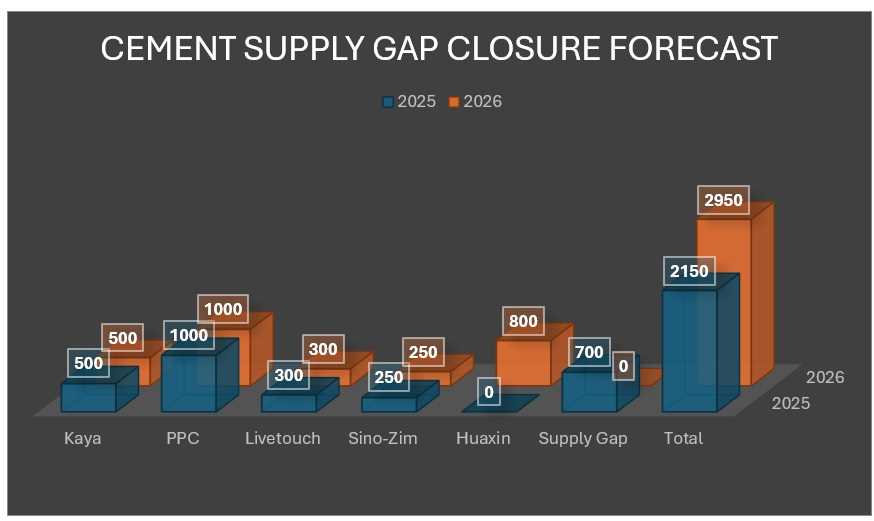Zimbabwe’s development trajectory continues to strengthen under the Second Republic, with major industrial milestones reshaping the nation’s economic landscape. Chinese Ambassador Zhou Ding has confirmed that Huaxin Cement’s new 800 000-tonne-per-year plant in Chegutu is now complete and set for commissioning in early 2026. This investment arrives at a critical moment, as the country’s construction boom – fuelled by large-scale public infrastructure works, industrial modernisation, and rapid urban expansion – has pushed national cement demand to 2.3–2.5 million tonnes per year, far above the current output of 1.7–1.9 million tonnes. The resulting shortfall of 500 000–700 000 tonnes has driven prices up by 42 percent, from US $12 to US $17 per bag.
The Huaxin project, the largest capacity expansion in the sector in more than a decade, will add over 30 percent to Zimbabwe’s national cement output and push total Chinese-owned production past 1.5 million tonnes annually. Alongside major Chinese players such as Dinson – whose Manhize steel plant and associated infrastructure investments continue to redefine Zimbabwe’s industrial base – this development reinforces China’s role as a key partner in the country’s modernisation drive.
Once operational, the Chegutu plant is expected to eliminate the entire national cement deficit, stabilise prices, and restore predictability for contractors, developers, and home-builders. By easing the market from the current US $17 per bag back toward more sustainable levels, the plant will improve housing affordability, reduce construction delays, and strengthen the entire infrastructure value chain.
This progress reflects President Mnangagwa’s commitment to inclusive development and the principle of “leaving no one and no place behind.” The Second Republic’s rural industrialisation agenda – which has already created 5 000 jobs in Matabeleland South this year – is being reinforced by strategic partnerships with Chinese investors who bring capital, technology, and operational efficiency. The cement sector now joins mining, agriculture, steel production, and energy as part of a diversified growth model driving Zimbabwe toward Vision 2030.
Beyond meeting local demand, the new plant will generate indirect employment in transport, logistics, and services while opening opportunities for future cement exports. It also sends a strong signal of investor confidence in Zimbabwe’s policy stability and economic potential.
As the nation advances along its development path, Huaxin’s investment stands as a clear example of transformative collaboration: visionary leadership from the Second Republic aligned with strategic global partnerships. The result is a more resilient, more industrialised, and more competitive Zimbabwe – where essential materials like cement become catalysts for sustained and inclusive national progress.
